NIL
The race to keep up with $40 million rosters is shaking college football
Imagn Images BLOOMINGTON, Ind. — It’s the first day of college football’s spring transfer portal window, players are jumping in left and right, and Indiana coach Curt Cignetti is anxious. Coming off an 11-2 2024 season that included a College Football Playoff berth, life is pretty good in Bloomington. The university and its supporters are committed […]
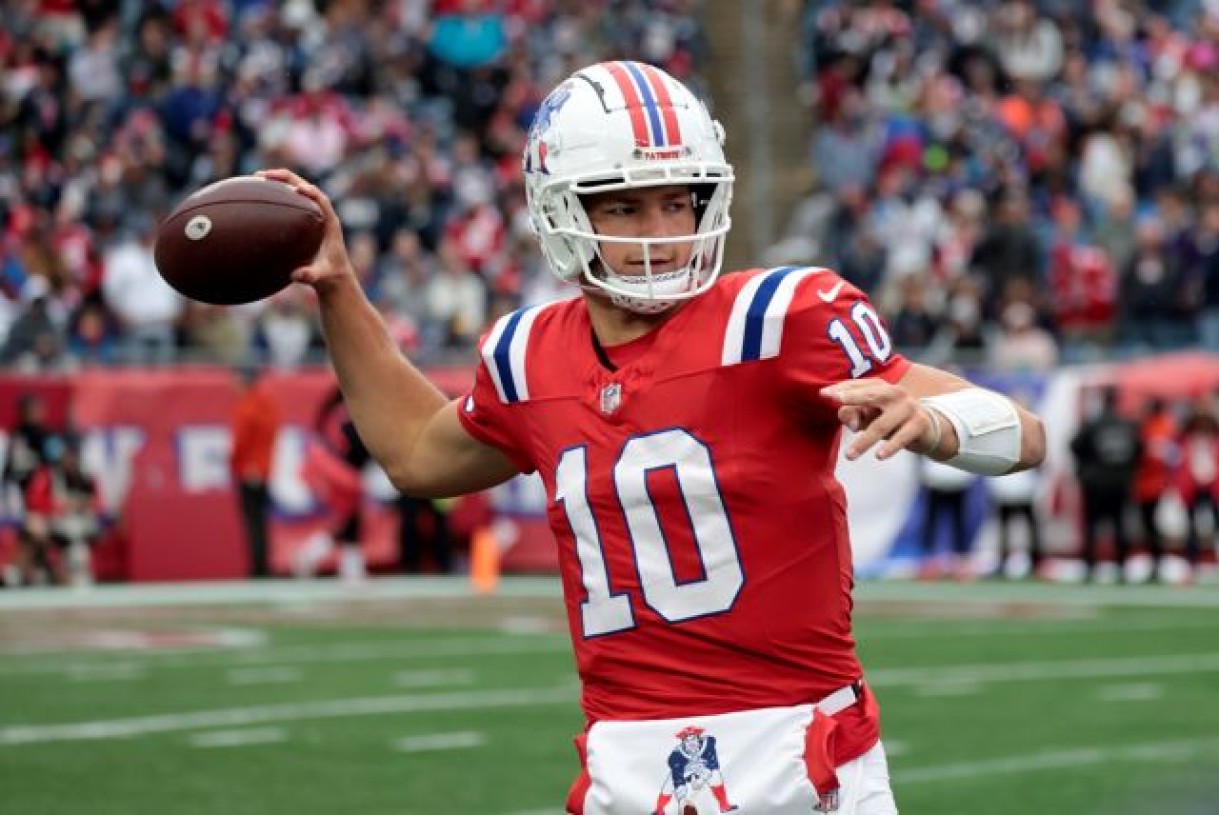
![]()

BLOOMINGTON, Ind. — It’s the first day of college football’s spring transfer portal window, players are jumping in left and right, and Indiana coach Curt Cignetti is anxious.
Coming off an 11-2 2024 season that included a College Football Playoff berth, life is pretty good in Bloomington. The university and its supporters are committed to investing in Indiana football, ensuring it can be more than just a one-hit wonder. With the fiery Cignetti’s unrelenting pursuit of success and the player and coaching talent returning, Indiana will have a real chance at making the College Football Playoff again in 2025.
But Cignetti is still uneasy — and for good reason. Tampering is rampant in college football, and around every corner, a possible enemy lurks trying to poach one of Cignetti’s players. In what was supposed to be a relatively quiet portal period, it has instead been super-charged with football programs making a last grasp at adding as much talent as possible before a likely NCAA v. House settlement that paves the way for revenue sharing.
“This is an unprecedented couple days, weeks, where everybody’s waiting on this rev share, and the five or six out there that have unlimited NIL resources, it’s kind of scary for everybody else,” Cignetti told CBS Sports. “I think our little pot of gold is pretty nice, but we’re not at $40 million. Or $30 million. Or even $25 million.”
A year ago, Ohio State made national headlines when athletic director Ross Bjork said the football program spent $20 million on its eventual national championship-winning roster, but multiple industry sources with knowledge of the market told CBS Sports the top spending programs in 2024 paid upwards of $30 million.
Is Cignetti saying the top of the market is now $40 million?
“Right now, I would say yes,” the Indiana football coach said.
Forty million dollars on a college football roster.
That is four times the new $10 million club at the top of college basketball that CBS Sports’ Matt Norlander detailed last week. One athletic director at a major college program recently told me that the most expensive college basketball roster could be $15 million-$18 million in 2025. Norlander put 10 schools in that exclusive $10 million club: Arkansas, BYU, Duke, Indiana, Kentucky, Louisville, Michigan, North Carolina, St. John’s and Texas Tech.
Cignetti’s proclaimed list of the biggest spenders isn’t as long but there is some overlap with the top basketball budgets.
“I mean if you want to be the best, you got to be able to compete against the best,” Cignetti said. “Right now I understand that is Oregon, Ohio State, Texas. … Texas Tech because of their oil money. I think Notre Dame’s up there pretty good right now, too. Miami, of course.”
Three of those schools rank in the top five of 247Sports’ team transfer portal rankings while Texas has added four Power Four defensive linemen transfers, one of the most expensive positions to grab out of the portal.
“Those people are kind of playing their own game, but you’ve got to be in that next tier,” Cignetti said. “There are enough good ones out there. You’ve got to be able to retain your good ones and then go get what you need.”
By the end of that first day of the spring window, more than 500 FBS players had jumped into the portal with many more to come in the following days. It ranged from starting SEC quarterbacks like Nico Iamaleava to second-team all-ACC receivers like Trebor Pena to star Cal running back Jadyn Ott.
The influx of likely revenue share money with NIL has sent player compensation skyrocketing. This isn’t necessarily new — CBS Sports detailed its impact on the market back in December — but that it has continued into April is, at least partially, because of a 75-year-old federal judge who resides in California.
The $10 million club: College basketball’s portal recruiting hits unthinkable levels of financial chaos
Matt Norlander
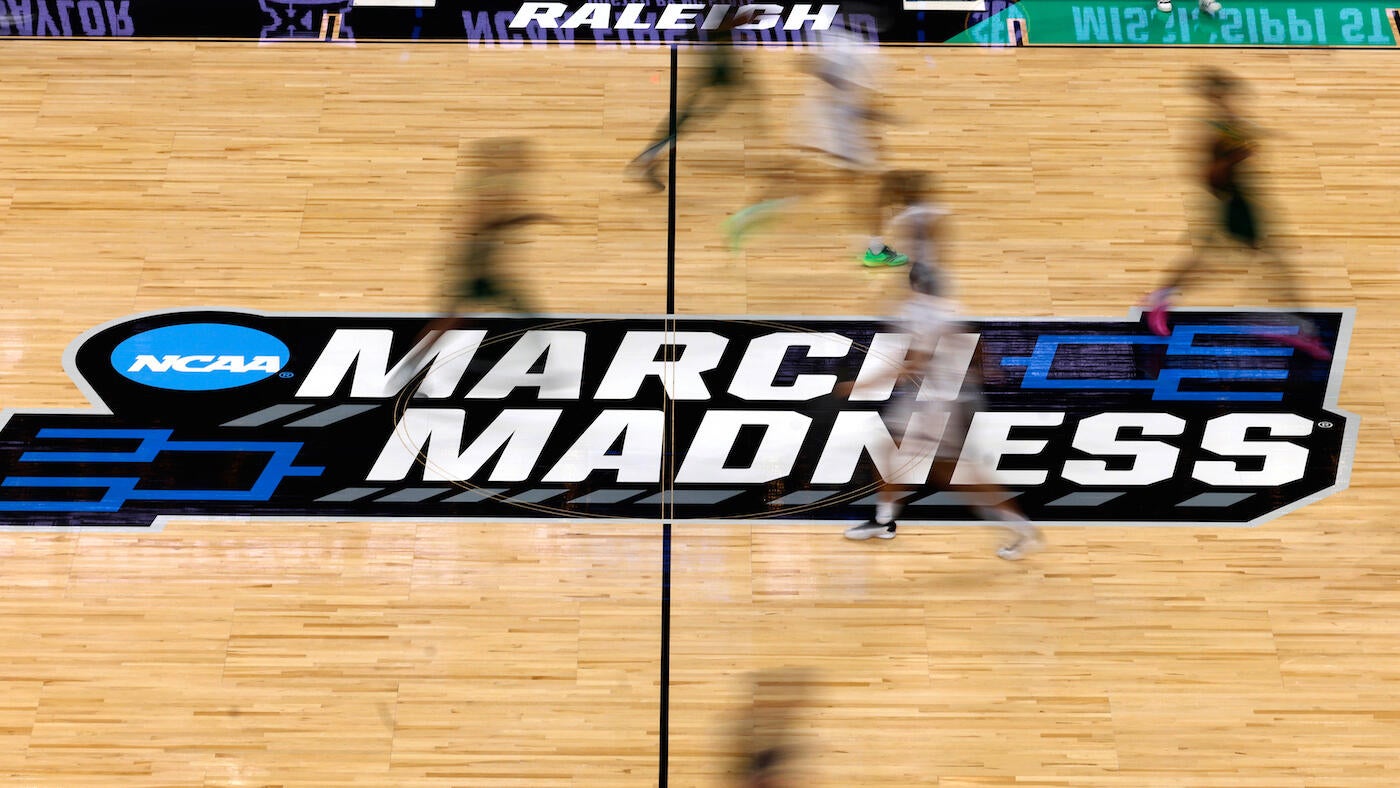
Is the House settlement finally coming?
In the swan song of a long legal career, Judge Claudia Wilken is expected to rule soon on the landmark House case. Multiple college sports executives told CBS Sports they thought it could happen at the end of last week by Good Friday, but when that came and went, the hope is now it’ll be this week.
If Wilken approves as expected, it will set in motion a $2.8 billion settlement and allow schools to begin paying their athletes directly as soon as July 1. Within those terms, schools are expected to have a $20.5 million “cap” in Year 1 to spend on all their athletes, with the specific payout up to each school’s discretion.
There are some notable things to consider out of that basic information.
One, if the top end of last year’s college football market was $30 million and the absolute max a school can spend now is $20.5 million — and no school will spend exclusively on football — something has to give. Either player compensation will have to come down, or schools will have to find a way to make up that money in other areas like NIL. Under the revenue share era, the difference is there will be third-party enforcement of NIL deals to see if they hold up to an ambiguous fair market value.
A Deloitte-administered NIL clearinghouse will weigh in on every NIL deal of $600 or more to determine whether it holds up to a fair market value assessment. There are a lot of different interpretations of what that enforcement will look like (more on that later) but the idea of regulating what has been a free-for-all for years has prompted some programs to be extra aggressive this cycle. The thinking goes that every deal signed before Wilken officially approves the House settlement won’t be subject to any review. It offers potentially the last opportunity to double-dip with unregulated NIL money and the impending revenue share money, allowing for programs to spend tens of millions on their 2025 rosters.
“People are trying to offload money now but this will be the last cycle where guys are getting big paychecks because of rev share,” says South Carolina general manager Darren Uscher.
House v. NCAA settlement: Approval awaits in landmark case as judge digs in on roster limits
Brandon Marcello
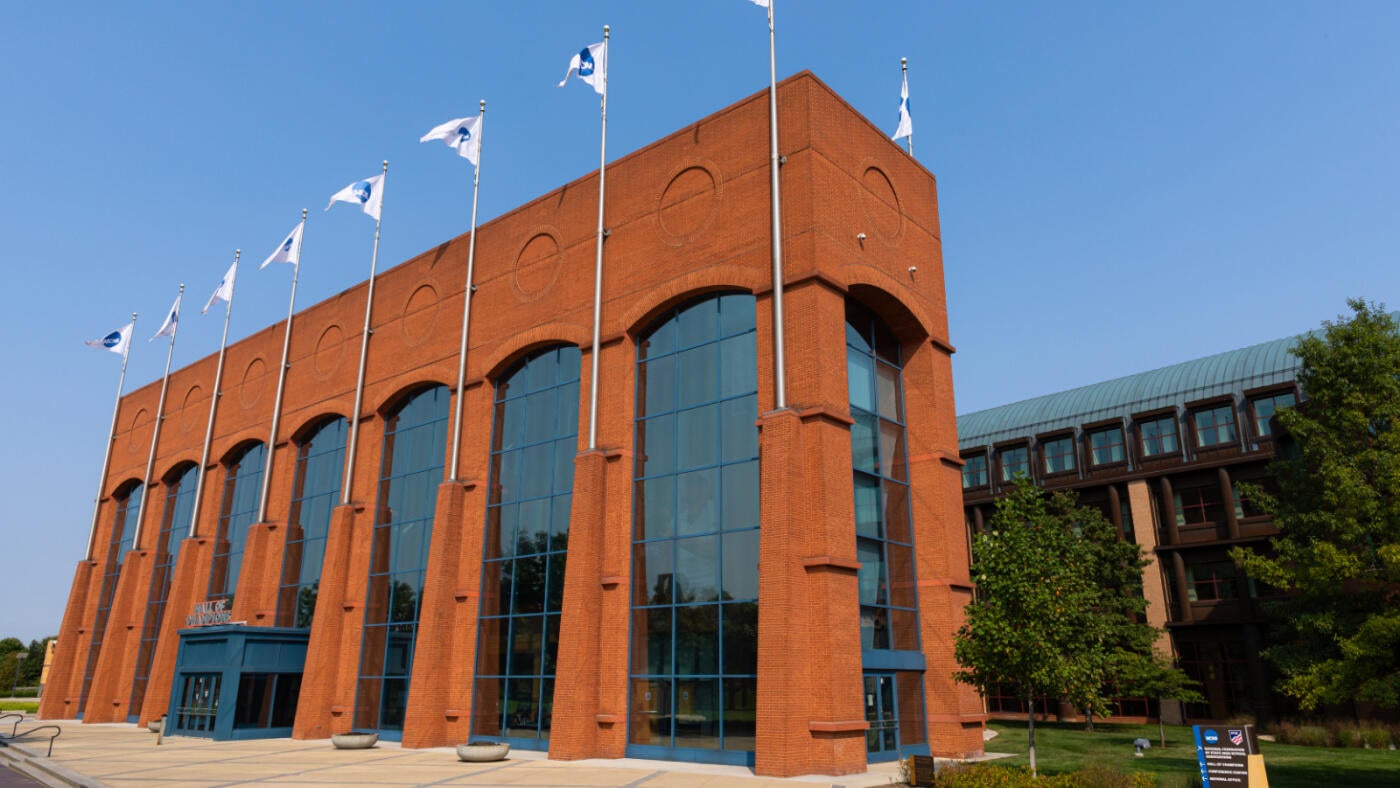
Texas Tech, which currently has 247Sports’ top-ranked transfer portal class, has been the most aggressive ahead of the revenue share era. Its top boosters saw an opportunity, decided that money was no object, and went all-in on landing a class that included recent Stanford transfer edge-rusher David Bailey, who multiple sources said will make more than $2.5 million to suit up for the Red Raiders next season.
“They are insane,” one NIL agent said, almost in awe. “They are crazy and do not care. I think they are like, we have one shot before this gets figured out to build a team, and we’ll just overpay people.”
It’s not just oil money-fueled Texas Tech, though. The agent detailed a recent negotiation with an SEC school for a top tackle. In December, he says, the market for a player of his caliber was in the $1 million to $1.5 million range. Now, it was $2 million to $2.5 million for no reason other than to spend as much money as possible before revenue sharing begins.
“Just raise the number, who cares,” is how the agent described the school’s approach. “Let’s just get him in there.”
Darren Heitner, a prominent sports law attorney, was bombarded with requests in the lead-up to Wilken’s April 7 House hearing. Schools were desperate to get deals finalized ahead of the hearing in case the settlement was approved that day. At a minimum, plenty of schools thought Wilken would rule before the spring transfer portal window opened on April 16, creating an unexpected final opportunity to deploy unregulated NIL money.
Heitner never believed Wilken would make a final ruling that day but happily obliged the requests and tried to extract as favorable terms as possible for his clients in the rushed scenario. The sports law attorney who works with athletes and collectives says there is no consensus among the industry on what it all means. Some schools fear what’s to come and think every deal must be completed before the settlement is approved. Others believe that there’s nothing to worry about as long as they are done before June 30. And the most bullish are skeptical of any enforcement component and will continue operating as they have been. It makes for a muddled market where it’s challenging to sift through what’s real.
“I would characterize it as absolute uncertainty and/or willful ignorance and trying to utilize the uncertainty as leverage when there’s a possibility of doing so,” Heitner said.
Consider Heitner in the skeptical department that the rush to get deals done is necessary.
“At the end of the day, even if Wilken just signed off on this revised settlement agreement, is there any real reason to be fearful of the system that’s going to be implemented?” Heitner said. “Do we really think that spending is going to be decreased as a result? I don’t.”
Are NIL and rev share contracts binding?
Many coaches and administrators hope revenue share agreements will calm a wild market. Currently, there are essentially two free agency periods, including one during the College Football Playoff, that allow players to potentially jump to multiple schools within an academic year.
Tight end Tanner Kaziol transferred to Houston from Wisconsin just last week after playing for Ball State last season. Quarterback Joey Aguilar entered the transfer portal Monday after UCLA recently added Nico Iamaleava. Aguilar, who played at Appalachian State last season, went through spring practice with UCLA but is now headed to Tennessee, the former home of Iamaleava.
Winners and losers from Nico Iamaleava saga: QB overplays his hand, UCLA makes a splash, Tennessee will be OK
Cameron Salerno
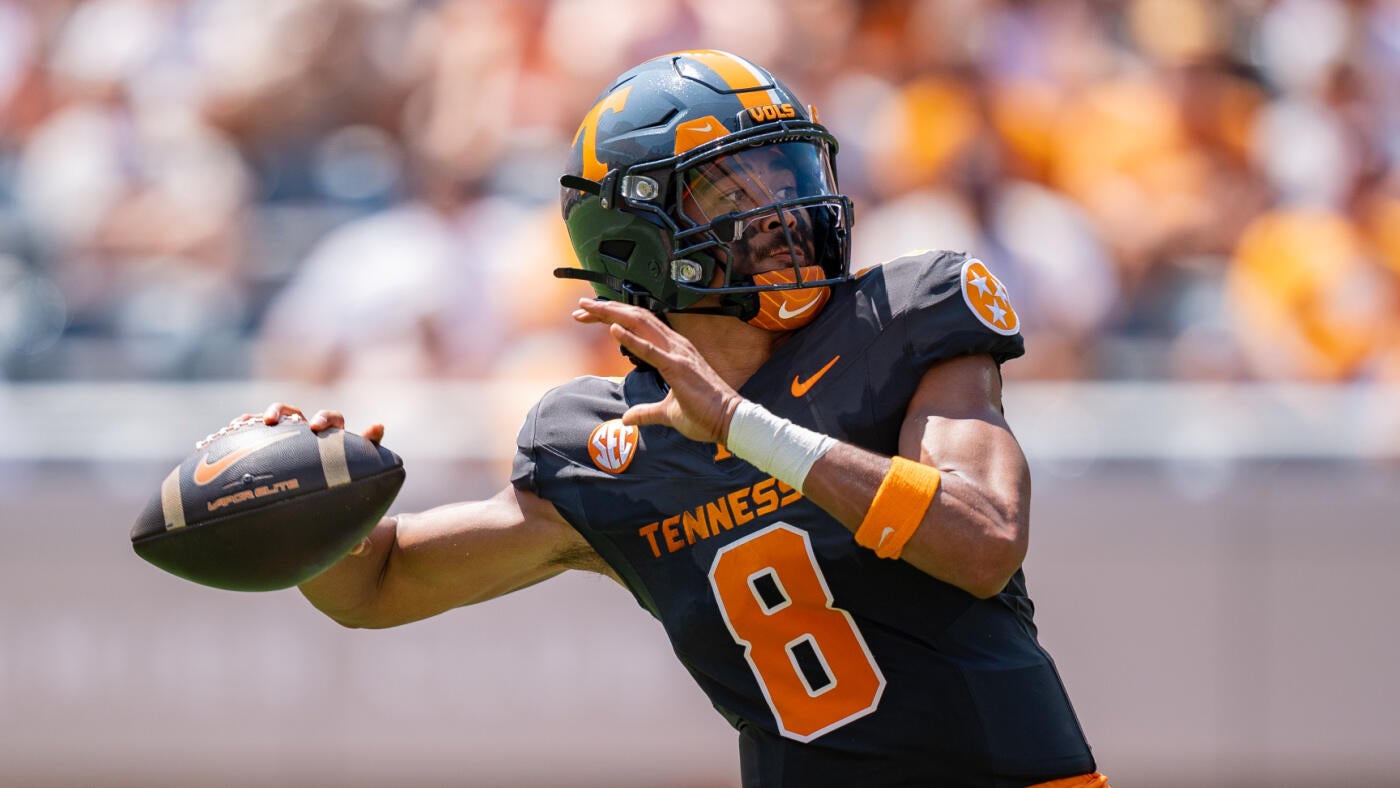
There are numerous other examples of players transferring away from schools before ever playing a game for them.
“Supposedly the thought was when they signed part of what they’re signing is a rev share deal is they are bound, to some extent, to your school,” Cignetti said. “You own their NIL rights. It hasn’t slowed down all these other guys jumping in.”
Miami defensive back Xavier Lucas is believed to be the first one to test the enforceability of the revenue share agreements when he left Wisconsin in January after signing a two-year deal that granted the school the non-exclusive rights to use his name, image and likeness. Wisconsin refused to submit his name in the transfer portal but Lucas went ahead and left the school anyway, enrolling academically at Miami. Heitner, who represented Lucas, had planned to file a lawsuit against Wisconsin for allegedly violating NCAA rules in its refusal to submit Lucas into the transfer portal before he withdrew academically from the school. Lucas, the 20th-ranked transfer player, is projected to be a starter for the Hurricanes in 2025.
The same questions Cignetti raised about rev share deals can be said for NIL agreements. In both college basketball and college football, collectives have devised agreements intended to bind a player to a school and force either the player or the new school to pay out the contract if said player chooses to leave. In a world without player unions and collective bargaining, this is the attempted workaround to bring stability to what is otherwise unregulated free agency all year.
The question is whether any of it is legally enforceable. Mit Winter, a well-known sports law attorney at Kennyhertz Perry LLC, believes they are not.
Arkansas athletics director Hunter Yurahek appears dead-set on finding out, announcing his support for NIL collective Arkansas Edge pursuing the enforcement of “their rights under any agreement violated by our student-athletes. The social media post came one day after backup quarterback Madden Iamaleava followed his brother, Nico, to UCLA
Heitner is currently representing a football player in a similar scenario. The player wants to enter the transfer portal and forfeit any remaining obligations while the collective is trying to enforce clauses within the contract which include liquidated damages. Heitner’s argument is that by leaving now and giving the school a chance to replace the player, “there’s really no harm whatsoever.” Still, like most things within college athletics these days, it’ll take a lawsuit to see what holds up or not. The same could be said for the fair market value assessment where Heitner says he’s already been asked to start preparing a lawsuit to challenge it once the House lawsuit settlement goes through.
Will the House settlement be approved, and if so, when? Can revenue share agreements provide stability to the current unrestricted free agency within college sports? Will the big collectives and NIL money still run the sport or will the new NIL clearinghouse enforcement actually have some teeth to it?
These are all questions coaches and administrators are asking themselves right now. With little clarity or direction, it is up to each individual school and coach to decide what is right and wrong strategically in this new era.
For coaches like Cignetti, coming off a terrific season, there is baited breath trying to get through this final portal window, which closes April 25, with an intact roster against a predatory market looking to pay big money for contributors.
“Right now is a different time,” the Indiana coach said. “These next couple weeks who knows how long until this thing gets passed because there’s some crazy stuff going on.”
NIL
Kirk Herbstreit recalls rumors involving Nico Iamaleava before CFP game: ‘Disgusting to me if true’
One of the wildest stories of the college football offseason was Nico Iamaleava’s spring departure from Tennessee. There were reports of Iamaleava’s transfer being the product of an NIL dispute. There were also claims that the decision was not financially motivated. Much of the college football world, particularly outside the Tennessee fanbase, was caught off […]

One of the wildest stories of the college football offseason was Nico Iamaleava’s spring departure from Tennessee. There were reports of Iamaleava’s transfer being the product of an NIL dispute. There were also claims that the decision was not financially motivated.
Much of the college football world, particularly outside the Tennessee fanbase, was caught off guard when it was initially reported that Iamaleava was considering entering the NCAA transfer portal during the spring window. During the Iamaleava drama, Josh Pate of CBS Sports revealed that Iamaleava nearly sat out the College Football Playoff game against Ohio State to renegotiate his NIL deal.
Kirk Herbstreit also heard about behind-the-scenes drama with Iamaleava before the game at Ohio State. During an appearance on the Try That in a Small Town podcast, Herbstreit recalled what he heard was going on in Knoxville before the CFP game.
“I’ve heard from close sources it was more about Nico’s dad going to Josh (Heupel) back in December before they played Ohio State. Like, ‘Hey listen, you got to get better at offensive line and better receiver. You got to get better around him if you want us to stick around,’ Herbstreit recalled.
“Which blows my mind that a college quarterback’s dad would do that to a head coach. And I think at the end of the day, when they got into spring ball, it was still more of you haven’t brought people in to make him and this offense better. Again, I don’t know if that’s true, but that’s what I was hearing.
“So I don’t think it was necessarily about the money. I think it was more about is Nico going to be able to play well enough to eventually be a first pick in a draft with the players that they had around him. That’s disgusting to me if that’s true.”
Iamaleava is now at UCLA and Tennessee has Joey Aguilar. But if College Football 26 is any indication, we’re sure to hear Iamaleava’s Tennessee exit brought up throughout the season.
The Nico Saga continues…
Nico’s dad allegedly told Heupel “You got to get better around him if you want us to stick around.”
Kirk Herbstreit gave his opinion saying, “That’s disgusting to me”
Via “Try That in a Small Town Podcast” pic.twitter.com/ew42DzeLt0
— Tri-Star Network (@TriStar_Network) July 21, 2025
Andrew writes about sports to fund his love of live music and collection of concert posters. He strongly endorses the Hall of Fame campaigns of Fred Taylor and Andruw Jones.
NIL
Will Alabama Basketball truly be only the SEC’s fifth-best team?
Alabama basketball fans are primed to expect the Crimson Tide to make another Final Four run. Nate Oats recruited a strong signing class and added quality pieces through the Transfer Portal. There are good reasons for optimism. Juxtaposed against such optimism is the SEC will again be a gauntlet. Last season, with a Strength of […]
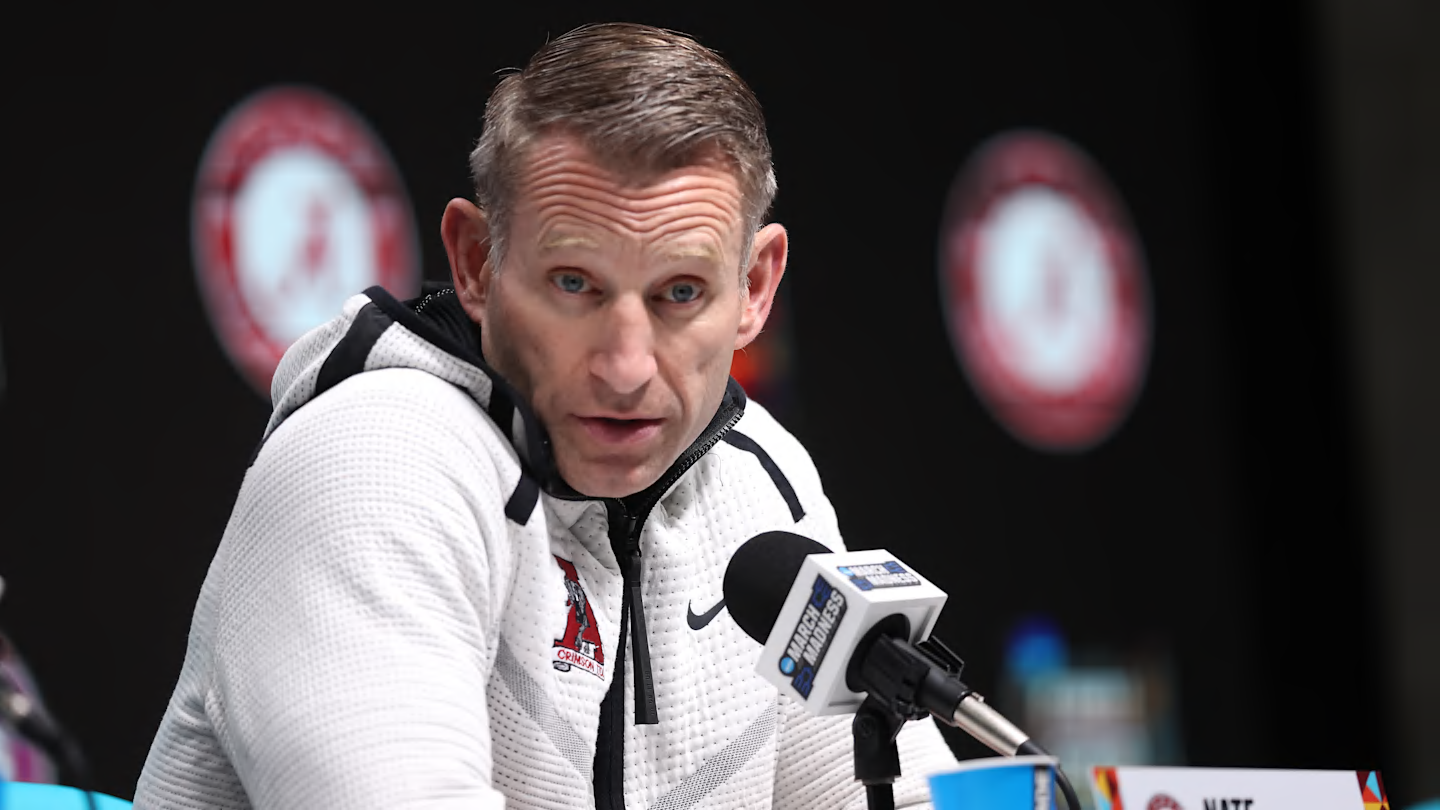
Alabama basketball fans are primed to expect the Crimson Tide to make another Final Four run. Nate Oats recruited a strong signing class and added quality pieces through the Transfer Portal. There are good reasons for optimism.
Juxtaposed against such optimism is the SEC will again be a gauntlet. Last season, with a Strength of Schedule ranked No. 1 by Ken Pomeroy, KPom ranked Alabama No. 4 offensively, No. 28 defensively, and overall, college basketball’s No. 6 team. With a better defensive performance, the Crimson Tide might have gained an NCAA Tournament 1-seed and made it to the Final Four. Pomeroy’s final ranking slotted Alabama as the SEC’s 4th-best team.
What about Alabama Basketball and 2025-26?
In early July, USA Today published a 2025-26 college basketball preseason ranking with Alabama as the SEC’s No. 2 team and No. 8 overall. With the Crimson Tide having to replace an average of over 60 points per game from last season’s roster, No. 2 in the SEC is a lofty preseason ranking.
Not all college basketball experts agree. More recently, Jon Rothstein, who knows more than a thing or two about the world of college basketball, stated that going into the 2025-26 season, Nate Oats’ team will be the SEC’s fifth-best. Above Alabama, Rothstein has Florida, Arkansas, Kentucky, and Auburn. ESPN Top 25 rankings by Jeff Borzello agree with Rothstein about Alabama. Borzello has Florida, Kentucky, Arkansas, and Auburn above the Crimson Tide.
Two months ago, I believed the Gators would not reload enough. With Alex Condon withdrawing from the NBA Draft and the $2M-plus transfer addition of Boogie Fland, Florida could be as good as last season. While it pains me to admit it, Rothstein is probably correct about Arkansas, Kentucky, and Auburn as well. All three programs have excelled at roster building. Mark Pope is too good a coach for Kentucky’s massive NIL investment not to pay dividends.
With no exact numbers, it is fair to believe the Gators, Wildcats, and Razorbacks have far outspent the Crimson Tide. There are reasons to claim that a lower payroll number for Nate Oats does not equal a below top-tier roster. Oats has filled needs with transfers and freshman recruits. Miami transfer, Jalil Bethea, and FSU transfer, Taylor Bol-Bowen, will either start or be in a top-seven rotation. Summer workouts indicate Tarleton State transfer Keitenn Bristow can compete with SEC-level talent. Rothstein predicts a big impact bump from Aiden Sherrell, who he describes as a great fit for Nate Oats’ system.
NIL
The meteoric rise of Lamine Yamal
Yamal’s rise commercially is underscored by his huge social media following, totaling 71.8 million across Instagram and TikTok. (Alex Caparros/Getty Images) Lamine Yamal, an incredible talent in the world of soccer, has rapidly ascended to prominence, showcasing his skills with FC Barcelona and the Spanish national team. At just 18 years old, Yamal has already […]



Lamine Yamal, an incredible talent in the world of soccer, has rapidly ascended to prominence, showcasing his skills with FC Barcelona and the Spanish national team. At just 18 years old, Yamal has already secured two league titles and a UEFA European Championship, marking him as one of the most accomplished young athletes in the sport.
His career so far has not only been defined by his on-field achievements but also by his impressive commercial appeal, which has attracted partnerships with globally recognized brands such as Adidas, Visa, and Konami.
Yamal’s Flourishing Personal Brand
Yamal’s rise in the commercial sphere is underscored by his substantial social media following, which totals 71.8 million across Instagram and TikTok. Since making his professional debut in April 2023, Yamal’s online presence has surged, reflecting both his athletic prowess and his engaging personality.
This combination has made him an attractive prospect for brands eager to align themselves with a rising star in the sports world.
With Yamal now having turned 18, he can expand his sponsorship portfolio to include categories that were previously unavailable to him, such as the gambling and alcoholic beverage industries.
According to GlobalData, these sectors both invest over $2.5 billion annually in sponsorship agreements, presenting a significant opportunity for athletes looking to enhance their commercial profiles.
However, he is unlikely to engage with the gambling or alcoholic beverage industries because of his Muslim faith. With his young age, he is likely to attract sponsorship from other industries keen to reach a younger demographic.
Current Sponsorship Landscape
As of now, Yamal has secured six active sponsorship deals, which collectively yield an annual value of $6.5 million. Below is a detailed breakdown of his endorsement agreements:
Lamine Yamal – Annual Sponsorship Values (US$M)
| Brand | Annual Value (US$m) |
|---|---|
| Adidas | 2,000,000 |
| Visa | 1,500,000 |
| Konami | 1,000,000 |
| Beats Electronics | 1,000,000 |
| Powerade | 500,000 |
| Oppo | 500,000 |
Yamal’s partnership with Adidas is particularly noteworthy; he has become one of the brand’s key ambassadors and, remarkably for his age, has his own signature boots, the F50 LY304. This achievement is a testament to his star power and potential in the sport.
Yamal’s most recent endorsement deal, worth $1 million per year, is with Beats Electronics, which has allowed him to feature in a recent campaign for the brand titled “Lamine Records.” Other high-profile athletes who are ambassadors for Beats Electronics include LeBron James (NBA) and Josh Allen (NFL).
Comparisons with Other Young Stars
Yamal’s early commercial success invites comparisons with other athletes who have made significant impacts in their respective sports at a young age. Kylian Mbappé, for instance, was instrumental in France’s 2018 World Cup victory at just 19 years old, which propelled his commercial appeal and led to lucrative deals, including a multi-year agreement with Hublot worth $1.14 million annually.
Similarly, Emma Raducanu captured global attention by winning the US Open at 18, subsequently signing endorsement deals with prestigious brands Tiffany & Co., Dior, Evian, and British Airways, worth a combined $3.53 million annually.
These examples illustrate the lucrative opportunities available to young athletes who achieve early success, but also highlight the challenges of maintaining performance and brand value in the face of injuries and fluctuating results, as has been the case with Raducanu.
The Broader Commercial Landscape of Soccer
The commercial potential of soccer is immense, particularly for its top stars. Cristiano Ronaldo, regarded as one of the greatest players in the sport’s history, boasts a staggering social media following exceeding 1 billion.
His marketability has attracted numerous brands, leading to a lifetime deal with Nike reportedly worth $1 billion—an agreement that places him alongside other sports icons like Michael Jordan and James. Ronaldo’s extensive current sponsorship portfolio includes partnerships with brands such as Binance, Visit Saudi, and Castrol.
The Path Forward for Yamal
While Lamine Yamal’s commercial appeal is undeniable, the key to his sustained success will lie in his ability to perform consistently at an elite level. As he navigates the pressures of professional soccer and the expectations that come with competing at the highest level of the sport, Yamal has the potential to become one of the highest-paid soccer players in the world.
By continuing to excel on the field and strategically expanding his sponsorship portfolio, he can solidify his status as a leading figure in world soccer in sporting and commercial terms. As he embarks on this exciting chapter of his career, sports fans will be watching closely to see how he balances his athletic ambitions with the opportunities that arise from being a global sports icon.
NIL
New Ohio State commit reportedly took ‘significantly less’ money and for good reason
People in Columbus are probably still buzzing quite a bit after the Ohio State football team was able to pick up a new commitment from 4-star wideout Jerquaden Guilford last week. The speedster had plenty of other suitors, but he knew in his heart that OSU is the place for him. He ended up committing […]

People in Columbus are probably still buzzing quite a bit after the Ohio State football team was able to pick up a new commitment from 4-star wideout Jerquaden Guilford last week. The speedster had plenty of other suitors, but he knew in his heart that OSU is the place for him.
He ended up committing to the Buckeyes despite other schools putting more NIL money on the table for him too? That appears to be the case. According to Rivals’ Greg Smith, the 6-2, 190-pounder indeed had bigger and better NIL offers in front of him, but he chose Ohio State for one particular reason: to be coached up by the one and only Brian Hartline.
Sources tell me that Guilford took significantly less of an NIL deal to be developed at Ohio State by Brian Hartline. https://t.co/ANWNbzy7Mt
— Greg Smith (@GregSmithRivals) July 18, 2025
Brian Hartline gets a major assist for Jerquaden Guilford committing to Ohio State
It is any surprise that Guilford has being coached up by Harline being a major reason why he’s going to suit up for the reigning national champs down the road? Absolutely not. Hartine has been a stud for Ryan Day and he’s all set to take over as the OC in town.
There’s pressure on him to deliver this upcoming season running the offense, but the Ohio State faithful are quite confident that he’ll get the job done. In terms of developing WRs, everyone knows Hartline is pretty darn elite in that department.
Jeremiah Smith is coming off a historic freshman season with the Buckeyes and he’s now all set to have a monster sophomore season for Day and Co. too. In 2026, 5-star Chris Henry Jr will be ready to make plays for Ohio State as well.
Add in the fact that Guilford and others will also be new on the roster and things are already looking fantastic for Ohio State for years to come. Guilford was also high on Penn State, but again, he knew Ohio State was the best place for him to get developed. He’s still got his senior season on the way, then he’ll make the move to Ohio from Indiana and be prepared for Hartline to help him take his game to the next level.
NIL
Colin Cowherd Is Dead Wrong About Big Ten “Money”
Fox Sports’ Colin Cowherd has been known to dish out a few hot takes over the years. Take, for example, his infamous “Hey LeBron, Ben Simmons is here. We’re good, bro,” a few years back. Classic stuff! Or maybe you prefer his “some of you owe Lincoln Riley an apology” soundbite from last football season. […]

Fox Sports’ Colin Cowherd has been known to dish out a few hot takes over the years.
Take, for example, his infamous “Hey LeBron, Ben Simmons is here. We’re good, bro,” a few years back.
Classic stuff!
Or maybe you prefer his “some of you owe Lincoln Riley an apology” soundbite from last football season.
The arrogance emanating from my computer screen after watching that is palpable.
Well, folks, Cowherd is at it again, though I will say this one is a little more subtle and nuanced than the first two.
There is A LOT to unpack here, so I will go through a few of my “favorite” points of his and refute them one at a time.
“The best offensive player is a Buckeye, the best defensive player is a Buckeye.”
This reminds me of those years when people would (incorrectly) clown the rest of the SEC for touting conference supremacy when Alabama was winning a majority of the championships.
Great, Colin! The best offensive and defensive players each play for Ohio State.
That’s one Big Ten team out of 18.
The best quarterbacks are all in other conferences, and besides Drew Allar, who is documented to be up-and-down at best, I am not sure another Big Ten team would crack a top-10 list of signal callers.
The best running back resides in South Bend, Indiana, while some of the best defenses belong to SEC teams and Clemson.
The Big Ten is a fantastic conference and is super deep this season, but the proliferation of top players is more widespread than our friend Colin here would have you believe.
Which leads me to his next point.
“Their recruiting… is through the roof. Their NIL is through the roof.”
The Big Ten is definitely one of the best recruiting conferences in the country, no doubt, but to frame it as if all of a sudden the conference has come out of nowhere and dethroned the SEC is laughable.
Let’s take a look at this past cycle’s recruiting rankings, courtesy of 247Sports.
Eight of the top 12 teams were from the SEC, including the top three (Texas, Georgia, and Alabama, in that order).
Only Ohio State, Oregon, and Michigan found their way into the top-10, and you have to scroll all the way down to 13 (USC) to find another Big Ten team.
Ever since Urban Meyer arrived in Columbus, the Buckeyes have been one of the top recruiting outfits in the country, so that’s nothing new.
The only new kid on the block, relatively speaking, is Michigan, who needed an unheard-of $10 million NIL infusion from a literal multi-billionaire in order to not crack the top-five.
Dominant stuff!
“They (Texas) scored 14 points in 32 straight SEC games. Ohio State held them to 14 points.”
This one is just splitting hairs from Colin, but it’s worth addressing nonetheless.
Texas played three ranked SEC teams in the back half of last season: Georgia twice and Texas A&M once.
They scored 15, 19, and 17 respectively in those games.
They also played unranked Arkansas and only scored 20 points.
Acting like Ohio State holding the Longhorns to 14 points is some Herculean task is pretty misleading stuff from Cowherd.
It was also a tie game heading into the fourth quarter and the total yards ended up being 289-283 in favor of the Buckeyes, so, a domination, it was not.
You know who Texas did dominate?
The Michigan Wolverines.
Perhaps Ohio State fans are familiar with that program?
“Big Ten schools are bigger, it’s easier to fund-raise for NIL… Big Ten money is Hollywood, tech, and financial centers. There’s a lot of car dealerships in the SEC.”
And thus we have arrived at Cowherd’s central argument here… and it is hot vomit!
Check out the list of top 10 spenders in college football in terms of NIL numbers.
Not exactly a list dominated by Big Ten schools, huh?
By my count, it’s a tie between the SEC and Big Ten with four a piece.
There must be a ton of “car dealerships” in Austin and Lubbock, right, Colin?
This is exactly the kind of dumb ass, coastal elitist crap I would expect from a guy like Cowherd.
“Oh, the South is full of dumb, poor hillbillies! Only teams from New York and Los Angeles can spend money on football!”
Has he ever been to an SEC campus? Those psychos would literally die for their team to win a national championship and their alumni bases are pretty flush with cash, too.
It’s not like Columbus, Ann Arbor, Madison, and State College are all bustling metropolises, either.
My absolute favorite part of his argument is when he name-drops New York and Chicago as cities that support his argument.
Rutgers and Northwestern? Really?
First, Rutgers is in Piscataway, which isn’t exactly uptown Manhattan.
Second, those are two of the worst Power 4 football programs of the past decade, so pointing to them as the harbingers of the SEC’s demise made my eyes roll so hard they practically fell out of their sockets.
Even if the Big Ten has tech money behind it – which is a moot point since states like Texas, Tennessee, and Florida are all welcoming tech companies by the truckload with their tax-friendly policies – it wouldn’t mean too much anyway.
These tech nerds, coastal liberals, and vapid celebrities don’t give a damn about recruiting and football the way the South does.
It’s the same reason USC had a top-five class last cycle and then fell to 13th by the end of it; no one in Los Angeles has the same bloodlust for national titles as the people of Athens or Tuscaloosa do.
Stick to the NFL, Colin.
College football would be a lot better off without ignorant casuals such as yourself speaking about things you know so little about.
NIL
Dates, Times, and Storylines to follow
On Tuesday Morning, the ACC Conference gathers in Charlotte, NC for the league’s annual Media Days event. The 2025 ACC Media Days may be the most exciting event yet, between the big headlines Nationally paired with some of the moves made in the Conference. The star power at ACC Media Days will stack up with […]
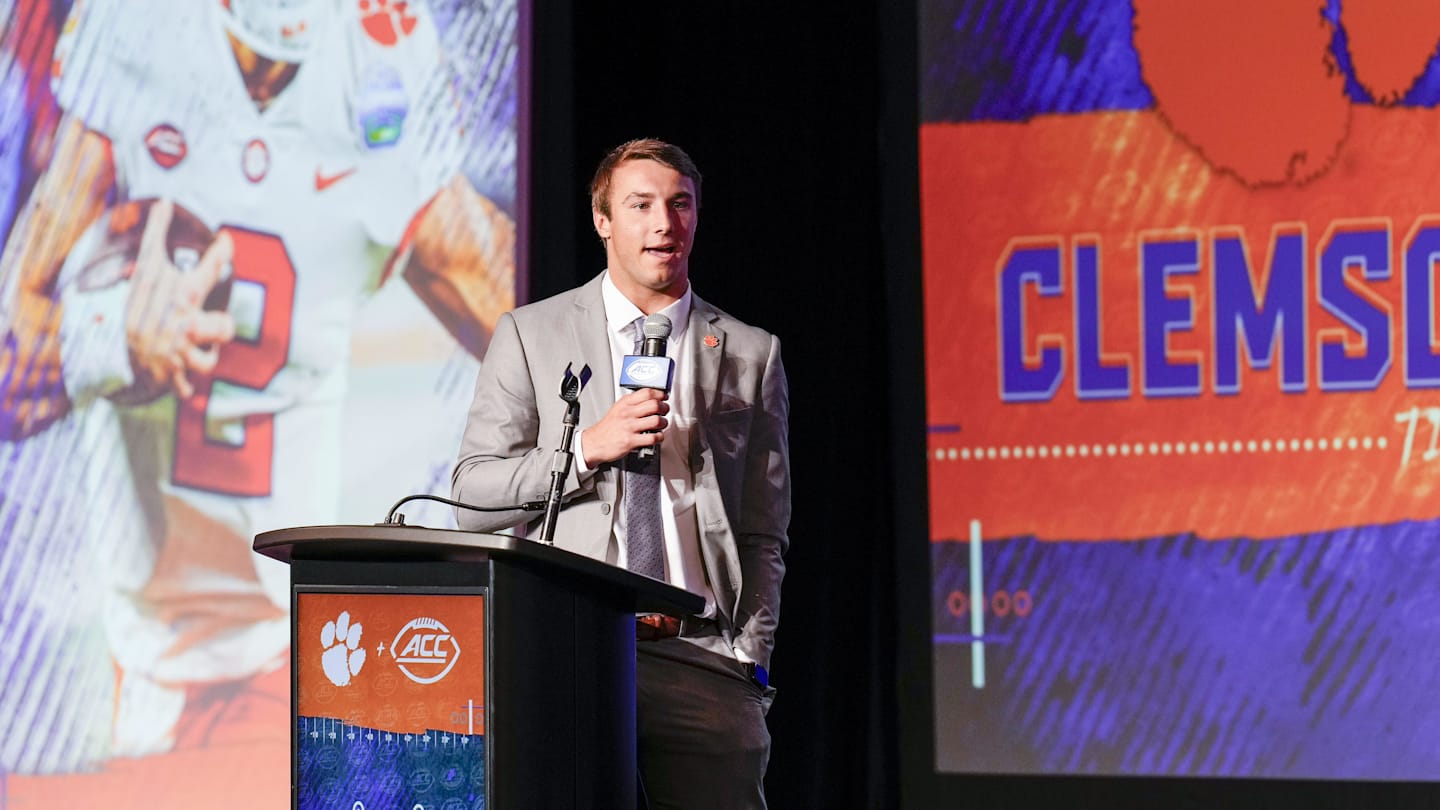
On Tuesday Morning, the ACC Conference gathers in Charlotte, NC for the league’s annual Media Days event. The 2025 ACC Media Days may be the most exciting event yet, between the big headlines Nationally paired with some of the moves made in the Conference. The star power at ACC Media Days will stack up with any other conference headlined by Bill Belichick and Dabo Swinney.
The event should give everyone insight into how each coach views their team heading into the season as everyone can convince themselves they’re a College Football Playoff contender in the expanded 12 team model. Ahead of ACC Media Days, we have you covered with key storylines to follow, which coaches and players will speak, and how to tune into the ACC Media Days.
3 Storylines to Follow at ACC Media Days
1. Bill Belichick’s first ACC Media Days appearance
The fact that Bill Belichick one of the greatest coaches in football history is now coaching at the college level is still to crazy to accept. While Arch Manning was a massive draw at SEC Media Days, Bill Belichick will truly have everyone’s attention ahead of his first season. Belichick will be asked about the transition to the college game, his views on recruiting, the transfer portal, NIL, and more likely than not, Jordon Hudson.
2. What will Thomas Castellanos say next?
Former Boston College Quarterback and Florida State starter Thomas Castellanos has been the quote king of the offseason with his shots at Alabama and Kalen DeBoer along with stating that he was trying to instill confidence in his new team. At ACC Media Days, Thomas Castellanos will certainly make headlines once again the only questions is over who will be his next target.
3. How confident is Dabo Swinney ahead of Clemson’s big year?
Dabo Swinney has gotten a ton of hate over the past few years, even from his own fanbase as Clemson has slipped a bit from their place at the top of the sport. As Clemson looks like National Championship front runners, we may see a new side of Dabo Swinney as his naysayers may not have anything left to say.
Tuesday’s ACC Media Days Schedule:
ACC Commissioner Jim Phillips will kick off the week by giving his annual forum at 9:00 AM Eastern Time. Given how hectic this offseason has been, Phillips will give his insightful takes on the House Settlement, NIL, expanding the College Football Playoff, and more.
The Miami Hurricanes are the first team to kick off the the event as Mario Cristobal takes the stage at 11:00 AM. The Hurricanes will bring Georgia transfer Carson Beck, LB Wesley Bissainthe, OL Francis Mauigoa, and DL Ahkeem Mesidor to the event.
The SMU Mustangs will follow Miami fresh off of their first season which resulted in an ACC Championship Game appearance and a College Football Playoff appearance. Rhett Lashlee will take the stage at 12:00 PM Eastern while he brings QB Kevin Jennings, LB Alexander Kilgore, S Isaiah Nwokobia, and OL Logan Parr to the event.
Frank Reich will make his debut as Stanford’s Head Coach at ACC Media Days on Tuesday at 1:00 PM Eastern Time. The program has a ton of questions as Head Coach Troy Taylor was fired in March amid allegations that he mistreated his staff. Joining Frank Reich at the event will be OL Simione Pale, TE Sam Roush, LB Tevarua Tafiti, and CB Collin Wright.
The California Golden Bears will follow Stanford onto the stage at 2:00 PM led by Head Coach Justin Wilcox. Former Ohio State QB Devin Brown, DL Aidan Keanaaina, LB Cade Uluave, and QB Jaron-Keawe Sagapolutele. Justin Wilcox bringing two quarterbacks to the event is fascinating like Deion Sanders bringing two QBs as Devin Brown is the expected starter but, the true Freshman attending always leads to intrigue.
Tony Elliott and the Virginia Cavaliers are the final program to speak on Day 1 of the event taking the stage at 3:00 PM. Joining Elliott in Charlotte are QB Chandler Morris, DL Mitchell Melton, OL Noah Josey, and DT Jahmeer Carter.
Wednesday’s ACC Media Days Schedule:
Mike Norvell and the Florida State Seminoles will take the stage to lead off the second day of the event at 10:00 AM. Quarterback Thomas Castellanos, DL Darrell Jackson Jr, OL Richie Leonard IV, and DB Earl Little Jr will speak at the event as well. Given how much Thomas Castellanos has made headlines this offseason, seeing the Seminoles new quarterback at the microphone will be interesting.
Following up Mike Norvell and the Seminoles are Jeff Brohm and the Louisville Cardinals at 11:00 AM. The Cardinals will be bringing transfer Quarterback Miller Moss, WR Chris Bell, LB TJ Quinn, and LB Antonio Watts. It’ll be most interesting to hear from Miller Moss on his move across the Country and how he’s adjusting to Louisville’s offense.
Fran Brown and the Syracuse Orange get the spotlight at Noon Eastern after an exciting offseason for the program. DB Duce Chestnut, LB Derek McDonald, DL Dion Watson Jr, and QB Rickie Collins will make the trip. Syracuse bringing Rickie Collins is interesting as Fran Brown named him the starting quarterback but, brought in Notre Dame transfer Steve Angeli in the Spring.
Pat Narduzzi and the Pitt Panthers get to follow up Syracuse at 1:00 PM and it’s always entertaining whenever Narduzzi is in front of the microphone. Pittsburgh is bringing RB Desmond Reid, DB Javon McIntrye, LB Kyle Louis, and OL Lyndon Cooper.
Georgia Tech’s turn comes at 2:00 PM Eastern after their exciting season under Brent Key. The Yellow Jackets may have one of the most exciting groups of athletes in attendance with QB Haynes King, WR Malik Rutherford, OL Keylan Rutledge, and LB Kyle Efford. This group has the top end talent to make a run in the ACC and it’ll be exciting to hear about how Key feels about his roster this season.
Wake Forest will get to end the second day of ACC Media Days at 3:00 PM when new head coach Jake Dickert takes the stage. Joining Jake Dickert in Charlotte will be DB Nick Anderson, RB Demond Claiborne, OL Devin Kylany, and DB Davaughn Patterson.
Thursday’s ACC Media Days Schedule:
An action packed Day 3 of the ACC Media Days begins with Bill O’Brien and the Boston College Eagles at 10:00 AM. WR Lewis Bond, LB Daveon Crouch, DB KP Price, and OL Logan Taylor will join Bill O’Brien in attendance.
Virginia Tech and Brent Pry will get to follow Boston College at 11:00 AM ahead of a pivotal year for Brent Pry and the the Hokies. Pry will be joined by QB Kyron Drones, LB Jaden Keller, WR Donavon Greene, and DL Kelvin Gilliam Jr.
At Noon, the fun truly begins as Dabo Swinney gets on stage as the Clemson Tigers head into a season where they’re National Championship front runners. Joining Dabo Swinney is a loaded group headlined by QB Cade Klubnik, DE T.J. Parker, WR Antonio Williams, and DL Peter Woods. Dabo Swinney will always steal the show but, it’ll be interesting to see his tone as he has a group capable of taking him back to the top of the sport.
Dabo Swinney gets followed up by another electric personality in Manny Diaz and the Duke Blue Devils. Duke will bring its prized offseason addition QB Darian Mensah, OL Brian Parker II, CB Chandler Rivers, and DE Wesley Williams. Mensah was one of the most talked about transfers of the offseason which will make his availability interesting.
The show will be stolen at 2:00 PM when Bill Belichick takes the stage for his first ACC Media Days as North Carolina’s Head Coach. Bill Belichick brings with him QB Gio Lopez, WR Jordan Shipp, DB Will Hardy, and DB Thaddeus Dixon. Hearing Bill Belichick talk about his team and the adjustments he’s making will make for an entertaining session.
Finally, wrapping up the ACC Media Days and the run on Carolina schools are the NC State Wolfpack at 3:00 PM. Dave Doern brings with him star TE Justin Joly, LB Caden Fordham, DL Brandon Cleveland, and QB CJ Bailey.
How to watch the 2025 ACC Media Days
ESPN’s ACC Network will be broadcasting live from the ACC Media Days starting at 9:00 AM Eastern Time and running through 5:00 PM. ACC Networks is an additional channel which means you may or may not be able to view the event depending on your TV or Streaming provider.
More ACC News:
-

 College Sports2 weeks ago
College Sports2 weeks agoWhy a rising mid-major power with an NCAA Tournament team opted out of revenue-sharing — and advertised it
-
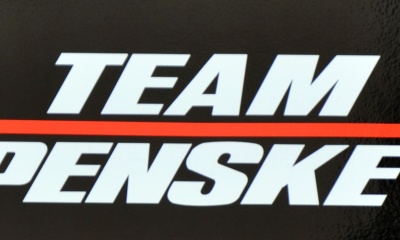
 Motorsports2 weeks ago
Motorsports2 weeks agoTeam Penske names new leadership
-

 Youtube3 weeks ago
Youtube3 weeks ago🚨 BREAKING: NBA MVP Shai Gilgeous-Alexander signs the RICHEST annual salary in league history
-

 Sports2 weeks ago
Sports2 weeks agoNew 'Bosch' spin
-
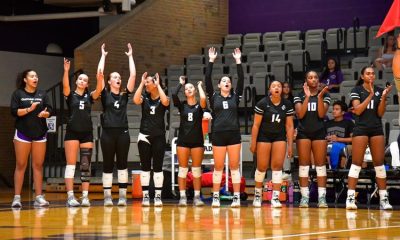
 Sports6 days ago
Sports6 days agoVolleyball Releases 2025 Schedule – Niagara University Athletics
-

 Fashion1 week ago
Fashion1 week agoEA Sports College Football 26 review – They got us in the first half, not gonna lie
-

 College Sports2 weeks ago
College Sports2 weeks agoMSU Hockey News – The Only Colors
-

 Sports2 weeks ago
Sports2 weeks agoE.l.f Cosmetics Builds Sports Marketing Game Plan Toward Bigger Goals
-

 Health1 week ago
Health1 week agoCAREGD Trademark Hits the Streets for Mental Health Month
-

 College Sports1 week ago
College Sports1 week agoBuford DB Tyriq Green Commits to Georgia























































